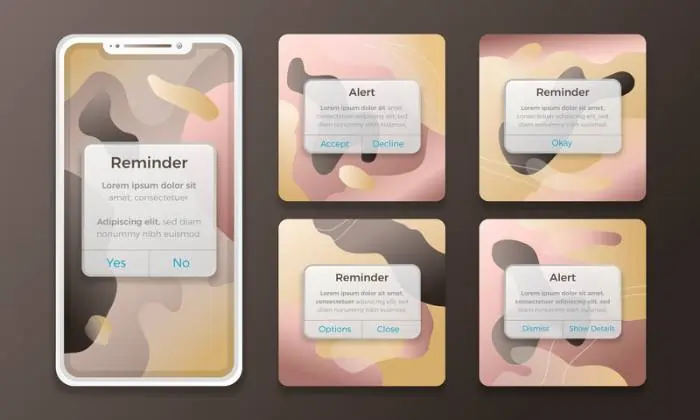How to Fix Notifications Not Working on iPhone: Consider your iPhone to be more than a technology; consider it to be a devoted friend in the hectic story of your life. It’s your digital orchestra’s conductor, harmonizing your alerts like the loveliest melody. But what if this song abruptly stops playing? The typical buzz that paints the canvas of your day with brilliant colors has died away.
Notifications are more than simply pop-ups in our digitally charged life; they represent the heartbeats of our connections, whispers of opportunity, and accolades for our accomplishments. When they fade away, it’s like missing a hug from a close friend. A void develops, leaving us craving for that connection, that familiar tap on the shoulder that says, “You’re important.” “You have a place.” But don’t worry! We will lead you through seven simple remedies in this article to help restore notifications on your iPhone and keep you in the loop.
How to Fix Notifications Not Working on iPhone
Check Do Not Disturb and Silent Mode
The simplest solutions are often the most overlooked. It’s possible that you have unintentionally enabled either the “Do Not Disturb” mode or switched your iPhone to silent mode. Let’s rule out these possibilities.
Do Not Disturb :- Swipe down from the top-right corner of the screen to access the Control Center. If the crescent moon icon is highlighted, tap it to turn off Do Not Disturb mode. Alternatively, go to Settings > Do Not Disturb and ensure it’s switched off.
Silent Mode :- Check the physical switch on the left side of your iPhone. If the switch is orange, flick it towards the back of the phone to disable silent mode.
Review Notification Settings for Specific Apps
Sometimes, app-specific notification settings might be the culprit. Here’s how to double-check and modify them –
Settings :- Open the Settings app and scroll down to find the specific app causing notification issues.
Notifications :- Tap on “Notifications” and ensure that the “Allow Notifications” toggle is enabled.
Alert Style :- Customize the alert style based on your preference, whether it’s banners, alerts, or none.
Sounds and Badges :- Verify that sounds and badges are enabled if you wish to receive auditory and visual alerts.
Restart Your iPhone
A classic troubleshooting step that often does wonders is restarting your iPhone. This simple action can resolve minor glitches and refresh the system. Here’s how you can restart your device –
iPhone X and newer :- Press and hold the side button and either volume button until the power off slider appears. Drag the slider, wait for 30 seconds, then press and hold the side button to turn your iPhone back on.
iPhone 8 and earlier :- Press and hold the top or side button until the power off slider appears. Drag the slider, wait for 30 seconds, then press and hold the top or side button to turn your iPhone back on.
Update iOS to the Latest Version
Outdated software can cause compatibility issues, including problems with notifications. Ensure that your iPhone is running the latest version of iOS –
Settings :- Open the Settings app on your iPhone.
General :- Tap on “General.”
Software Update :- Select “Software Update” and install any available updates.
Reset All Settings
If the issue persists, you can reset all settings on your iPhone. This won’t erase your data, but it will reset system settings like Wi-Fi passwords and wallpaper. Follow these steps –
Settings :- Open the Settings app.
General :- Tap on “General.”
Reset :- Scroll down and tap on “Reset.”
Reset All Settings :- Select “Reset All Settings” and confirm.
Check App-Specific Settings
Some apps have their own notification settings within the app itself. If notifications are not showing up for a particular app, it’s worth checking the app’s settings –
Open the App :- Launch the app in question.
Settings or Profile :- Look for a settings or profile section within the app.
Notifications :- Navigate to the notifications section and ensure notifications are enabled for that app.
Check Battery and Background App Refresh Settings
iOS manages how apps use resources like battery and data in the background. If these settings are too restrictive, it can affect notifications. Adjust them accordingly –
Settings :- Open the Settings app.
Battery :- Tap on “Battery.”
Low Power Mode :- Ensure that Low Power Mode is turned off as it can restrict certain tasks in the background.
Background App Refresh :- Go back to Settings, tap on “General,” and then select “Background App Refresh.” Make sure it’s enabled, and you can customize it based on your preferences.
Final thoughts
Most iPhone users rely on alerts to keep them informed. When these messages cease appearing, it can interrupt our daily routine and add extra stress to our lives. You may diagnose and resolve notification issues on your iPhone by following the methods indicated in this article. There is a method to get your alerts back on track, whether it’s a simple toggle, an app-specific option, or a system upgrade. Using these easy yet effective remedies, you can stay connected and productive with your iPhone.
Thank You for Visiting BIBCOL.COM We appreciate it that you have made time to read this entire article You can browse more sections from our website such as Government Schemes, Exam Dates, Entertainment, etc based on your reading interests.

